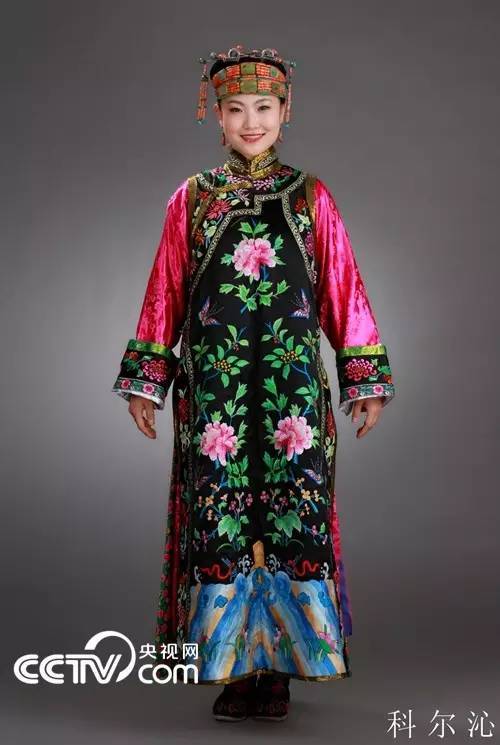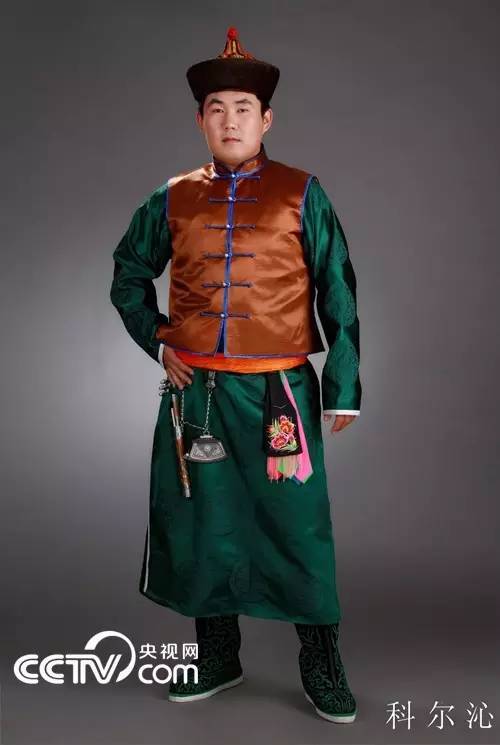Horqin



Origin of the Tribe
Meaning “people with arrows and bows” in Mongolian, Horqin tribal people are descended from Hasar (the younger brother of Genghis Khan) and his subjects. They first resided inthe Ergun River basin in the early Northern Yuan dynasty. Afterwards, a branch of them moved to the Nenjiang basin to the southeast of the Greater Khingan Range, which was later known as the Nun Horqin. When the Later Jin rose as a new political power, Nun Horqin resided in today’s Hinggan League, Tongliao city and the west of Northeast China. In 1626, the Nun Horqin submitted itself to the Later Jin and was then divided into six banners. Today, the Horqin people living in Inner Mongolia are the offspring of Nun Horqin.
Features of the Clothing
In addition to the basic Mongolian characteristics and tribal styles, Horqin costumes are also influenced by Manchu and Han cultures, which is reflected in women’s clothing. Symmetric patterns distinguish Horqin women’s costumes from other tribes. Furthermore, embroidered auspicious patterns are frequently seen in collar stands, fronts, cuffs, slits and the edges of hems on robes and waistcoats.
Dressing Customs
Senior people don’t wear bright colors, or children waistcoats and riding jackets. Young men wear waistbands with steels and knifes on the right front, pouches containing ornaments like agate, jade or jadeite snuff bottles on the left front, and sachets with six to eight ribbons on the right back. Apart from the wedding attire, grooms need to wear bows and arrows for weddings.





